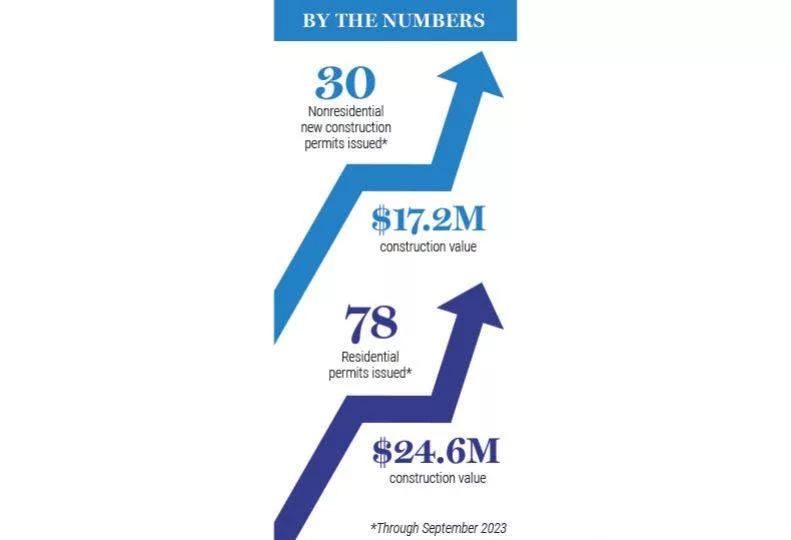Permit activity increases in Hayden; industrial projects lead way
Residential construction outpaces nonresidential work by about $6 million

Permit activity is trending upward this year in Hayden, a building trends report with data through September shows.
Thirty nonresidential, new construction permits have been issued this year through September, up from 21 in all of 2022, 27 in 2021, and 18 in 2020.
Hayden is a town of about 16,000 people with its core positioned along U.S. 95, west of Hayden Lake, and north of Coeur d’Alene.
One reason for the uptick in activity is that there have been more lots available for developers to build on than the past few years, says Donna Phillips, community and economic development director for the city of Hayden.
“You have a certain number of lots that are out there, and the developers of those lots feel fairly comfortable with the numbers that are out there,” she says. “When it starts to feel a little tight in lots, then we start seeing folks come forward to look for another (nonresidential) subdivision.”
Phillips says some light-industrial building complexes have contributed to the rise in nonresidential new construction permits issued this year. One of those complexes is Daugharty Commerce Park, located west of Atlas Road and north of Hayden Avenue, which is expected to have 42 buildings once complete, the Journal previously reported.
Phillips also mentions some commercial lots along U.S. 95 between Wyoming Avenue and Lancaster Road that have contributed to the rise in nonresidential permits.
Total nonresidential permits issued, which factor in building accessories, alterations, and additions, are on pace to surpass the counts of each of the prior three years, the building trends report shows.
Through September, the total number of nonresidential permits issued is 47, down just one from all of 2022.
Another reason for the increase in nonresidential permits issued, Phillips says, is developers adding what’s referred to as level 3 power to more lots, making them more marketable for potential light industrial tenants. Level 3 power allows tenants to operate machinery that runs off higher intensity power, she says.
Despite the increase in activity this year, Phillips says she doesn’t expect the trend to continue.
“It’s probably going to level off,” she says. “It might not go up again because of the building stock that’s out there.”
Total residential permits issued this year also have risen since 2022, the report shows.
Through September, 78 residential permits, the majority of which were for single-family residences, have been issued in Hayden, up from a total of 62 in all of 2022.
The reason for the increase in residential permits issued also boils down to lot availability, Phillips contends.
“You see this ebb and flow between nonresidential and residential following the pattern of availability of lots,” says Phillips.
Total residential permits issued in 2022 and so far in 2023 are significantly lower than the three years prior—182 in 2021, 251 in 2020, and 148 in 2019—because of higher construction costs and other economic concerns, Phillips says.
Single-family residential permits, however, are expected to roughly double the 2023 total in December, because of the completion of a North Hayden subdivision’s infrastructure, Phillips says.
About 50 permits are ready to be issued for that subdivision in December, she says.
That drastic increase will bring 2023’s residential permit totals closer to 2021 totals, although Phillips says that number might be skewed because roughly half of it will come from the one development.
Through September, residential construction value has outpaced nonresidential construction by about $6 million. Residential work has added up to about $25 million, while nonresidential has accounted for about $19 million.
Part of Hayden’s mission is to work with businesses, so they want to stay in the North Idaho city, Phillips says. That also applies to the people of Hayden, she says.
“We’re really trying to keep that diversification and availability out there,” Phillips says.


_c.webp?t=1763626051)

_web.webp?t=1764835652)
